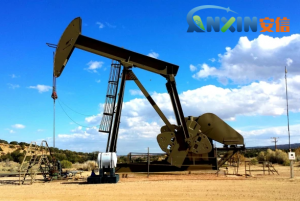Carboxymethyl cellulose (CMC), as a water-soluble cellulose derivative, is widely used in petroleum drilling fluid systems due to its excellent solubility, viscosity-increasing property, blocking ability and anti-pollution capacity. During the drilling process from shallow layers to deep Wells, high-temperature Wells and even complex formations, CMC can effectively improve the stability, lubricity and solid dispersion of the wellbore through multi-dimensional rheological regulation and fluid loss control, and is an indispensable important treatment agent for drilling fluids.
1. Viscosity increase and rheological regulation mechanism
1.1. Polymer chain stretching effect
CMC contains carboxymethyl anionic groups. After ionization in water, the intermolecular electrostatic repulsion is enhanced, making its chain segments present a fully extended structure. The stretched polymer significantly increases the viscosity of the drilling fluid through entanglement and hydration, thereby enhancing the suspension carrying capacity.
1.2. Network structure formation
CMC molecules can form a temporary three-dimensional network structure through hydrogen bonds. This structure is prone to dissociation under shear and can be restored under static conditions, thereby endowing the drilling fluid with good thixotropy.
During the drilling process, good thixotropy can ensure that the solid phase does not settle when drilling stops and the viscosity does not become too high during drilling, maintaining stable rheological properties.
2. Excellent filter loss control mechanism
2.1. Filter cake densification
CMC molecules can adsorb and combine with clay particles or weighting materials in drilling fluid, forming a dense and tough filter cake layer on the wellbore surface.
The spreading and filling effect of the polymer chains reduces the pores between the filter cake particles, significantly lowering the filtration loss rate.
2.2. Permeable layer sealing
For high-permeability layers such as fractures and micropores, CMC can enter the micro-channels and form a flexible polymer film through molecular extension and flexible chain segment intercalation, effectively preventing the infiltration of drilling fluid filtrate into the formation.
2.3. Synergistic effect with Clay particles
CMC can alter the thickness and dispersion of the hydration layer of clay particles such as montmorillonite and illite, making the filter cake structure more uniform and stable, and achieving stronger liquid barrier performance.
3. Solid-phase stability and inhibition of dispersion mechanism
3.1. Adsorption stabilizes particles
CMC molecules complex with metal ions on the solid surface through carboxyl groups, and at the same time, their chain segments can coat the particle surface, endowing the particles with the same charge, thereby enhancing discrete stability and preventing agglomeration or excessive dispersion.
3.2. Inhibit the dispersion of shale
CMC has a certain inhibitory effect on the hydration expansion of shale and can significantly reduce the hydration dispersion rate.
This is because CMC molecules can be adsorbed on the surface of shale, forming a protective layer that blocks further intrusion between water and shale layers.
3.3. Improve the performance of carrying and cleaning the bottom of the well
A stable solid particle system and appropriate viscosity enable the drilling fluid to have a good ability to carry drill cuttings, improve the cleaning effect at the bottom of the well, and reduce the risk of stuck drill.
4. Lubrication and drag reduction mechanism
4.1. Molecular hydration film function
The hydration film formed by CMC in water can adhere to the surface of drilling tools and cuttings, reducing their friction coefficient with the wellbore.
4.2. Improve system liquidity
The uniform rheological system formed by CMC can improve the particle dispersion, thereby enhancing the overall flow smoothness of the drilling fluid and indirectly reducing frictional resistance.
5. Stability mechanism under salt calcium pollution
5.1. The complexation ability of carboxyl groups with calcium and magnesium ions
The carboxylic acid groups of CMC can form complexes with Ca²⁺ and Mg²⁺, preventing polymer degradation or coagulation induced by high-valent ions.
5.2. Maintain hydration and solubility
Although a high-mineralization environment will compress the electric bilayer, the degree of substitution (DS value) of CMC is relatively high, which can still maintain a certain solubility and chain segment extensibility, thereby ensuring that its viscosifying and filtration control functions do not fail.
6. Functional characteristics under high-temperature conditions
Common CMC can still maintain good performance at 80-120 ℃, while the selection of high viscosity, low viscosity, and PAC substitution degree can further enhance the temperature resistance. Its effect at high temperatures is manifested as:
The stability of the molecular chain structure enhances the stability of the filter cake
The lower degradation rate ensures the control ability of viscosity increase and filtration loss
CMC with a high DS value is less sensitive to oxidative degradation
The mechanism of CMC in petroleum drilling fluids covers multiple aspects such as rheological regulation, fluid loss control, solid phase stability, wellbore stability, lubrication and resistance reduction, as well as salt and temperature resistance. It is a drilling fluid treatment agent with comprehensive performance, moderate cost and strong adaptability. It still has irreplaceable application value in drilling complex strata, shale gas development, and the construction of deep and ultra-deep Wells.
Post time: Nov-08-2025








